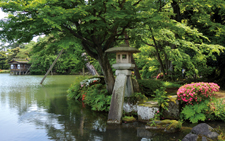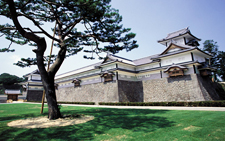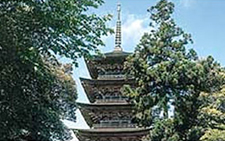


- About Us
-
Member Regional Governments
- China
- Japan
- South Korea (ROK)
- Introduction
- Busan Metropolitan City
- Daegu Metropolitan City
- Incheon Metropolitan City
- Gwangju Metropolitan City
- Daejeon Metropolitan City
- Ulsan Metropolitan City
- Sejong Special Self-Governing City
- Gyeonggi-do Province
- Gangwon State
- Chungcheongbuk-do Province
- Chungcheongnam-do Province
- Jeongbuk State
- Jeollanam-do Province
- Gyeongsangbuk-do Province
- Gyeongsangnam-do Province
- Jeju Special Self-Governing Province
- North Korea (DPRK)
- Mongolia
- Introduction
- Ulaanbaatar City
- Arkhangai Province
- Bayan-Ulgii Province
- Bayankhongor Province
- Bulgan Province
- Govi-Altai Province
- Govisumber Province
- Darkhan-Uul Province
- Dornod Province
- Dornogovi Province
- Dundgovi Province
- Zavkhan Province
- Orkhon Province
- Uvurkhangai Province
- Umnugovi Province
- Sukhbaatar Province
- Selenge Province
- Tuv Province
- Uvs Province
- Khovd Province
- Khentii Province
- Khuvsgul Province
- Culture & Tourism
- Russia
- Introduction
- Republic of Buryatia
- Republic of Sakha(Yakutia)
- Republic of Tuva
- Altai Region
- Zabaikalsky Territory
- Krasnoyarsk Territory
- Primorsky Territory
- Khabarovsk Territory
- Amur Region
- Irkutsk Region
- Kamchatka Territory
- Magadan Region
- Sakhalin Region
- Tomsk Region
- Kemerovo Region
- Republic of Khakassia
- Republic of Altai
- Associate Member
- Observer
-
Subcommittee
- Subcommittee
- Subcommittee on Economy and Humanities Exchange
- Subcommittee on Agriculture
- Subcommittee on Educational and Cultural Exchange
- Subcommittee on Environment
- Subcommittee on Disaster Prevention
- Subcommittee on Energy and Climate Change
- Subcommittee on Mineral Resources Development
- Subcommittee on Tourism
- Subcommittee on Oceans and Fisheries
- Subcommittee on Bio-medical Industry
- Subcommittee on Sports
- Subcommittee on Logistics and Transportation
- Subcommittee on International Exchange of Human Resources
- Subcommittee on E-Commerce
- Subcommittee on Innovation Plus
- Subcommittee on Youth Policy
- Subcommittee on Traditional Medicine
- News/Activities
- Getting to Know Your Region
- Publications
- Database
The hub of exchange &
cooperation in Northeast Asia
Culture & Tourism
Natural View

Kenrokuen Gardern
Along with Kairakuen in Mito City and Korakuen in Okayama City, Kenrokuen is one of the three most beautiful gardens in Japan, where the characteristics of the "Kaiyurinsen" Style from the Edo Period still remains inside the garden today. Kenrokuen was built by the 5th lord of the Kaga Clan Tsunanori in 1676 (Enbo 3), and it took about 170 years to finish. Kenrokuen, meaning "having six factors", was given the name because of the 6 attributes that bring out the perfect landscape of the garden: spacious, tranquility, artificial, antiquity, water fountains and magnificent view from the mountain. It has many attractions such as the lanterns, Gankobashi Bridge and the Kasumigaike Pond. One can also enjoy the beautiful sceneries of the four seasons such as Cherry blossoms, Iris fields, autumn foliage and Yukitsuri.
Information
- Address : Kenrokumachi1-4, Kanazawa-shi
- Telephone : +81-(0)76-234-3800
- Fax : +81-(0)76-234-5292
- Fee : Adult - 300 JPY, under 18 - 100 JPY
- Hours : 7:00 - 18:00 (Mar. 1 - Oct. 15)
8:00 - 16:30 (Oct. 16 - Feb 28) - Closings : Open all days
- Access : JR Kanazawa Stn. Bus 15-min. ride
Kenrokuen-shita Stop 1-min. walk

Hishi Yagura, Gojikken Nagaya and Hashizume-mon Tsuzuki Yagura (Kanazawa Castle Park)
Being the castle resided by the Kaga Clan, the ruins of Kanazawa Castle was repaired and the area was renovated and turned into a castle park. Historical wooden structures inside the park such as the Gojikken Nagaya and the Hashizumemon Tsuzuki Yagura were restored as well.The Hishi Yagura, the Gojikken Nagaya and the Hashizumemon Tsuzuki Yagura were restored by professionals using traditional Japanese construction methods after they were destroyed over 120 years ago. These buildings are of the largest scale of historical wooden structures that were built after the Meiji Period.
Information
- Address : 1-1 Marunouchi, Kanazawa-shi
- Telephone : +81-(0)76-234-3800
- Fax : +81-(0)76-234-5292
- Fee : Free entrance into the park
Hishi Yagura:Adult - 300 JPY under 18 - 100 JPY - Hours : Park 07:00-18:00 (3/1-10/15), 08:00-16:30 (10/16-end of February)
Hishi Yagura 09:00-16:30 (Entry Open till 16:00) - Open/Opening Period : Park 07:00-18:00 (3/1-10/15)
Hishi Yagura 09:00-16:30 (Entry Open till 16:00) - Closings : Park - All days
Hishi Yagura - 12/29 - 01/03 - 교통편 : Right next to Kenrokuen-shita Bus Stop

Myojoji Temple
Myojoji Temple is the head temple of Nichiren Sect in Hokuriku Region. Visitors can also visit Joroku-do, a hall containing a wooden statue of Shakamuni Buddha (5 meters tall, 1686); this statue was restored lately to remove all alterations that were made last centuries, and recovered now its original appearance. An English pamphlet is provided to foreign visitors. Some of the temple buildings which are designated as Important Cultural Properties were made during the reign of first 5 generations of Kaga's ruling feudal family-Maedas. Especially, the 34 meters tall Goju-no-To (5 storied pagoda) is the largest wooden pagoda in Hokuriku region and it's a masterpiece of early Edo Period pagodas. It's the only 5 storied pagodas in Japan which has a tochibuki roof.
Information
- Address : YO-1 Takidani-machi, Hakui City, 925-0002
- Telephone : +81-(0)767-27-1226
- Fax : +81-(0)767-27-1227
- Fee : Adult 500 JPY; Elementary and Junior High School Students 300 JPY
- Hours : 8:00 - 17:00 (April - October) / 8:00 - 16:30 (November - March)
- Closings : Open All Year Round
- Access : Take the Noto Seibu Bus bound for Togi or Takahama from JR Hakui Station, get off at Takidani-kuchi Bus Stop and walk for 20 minutes.







